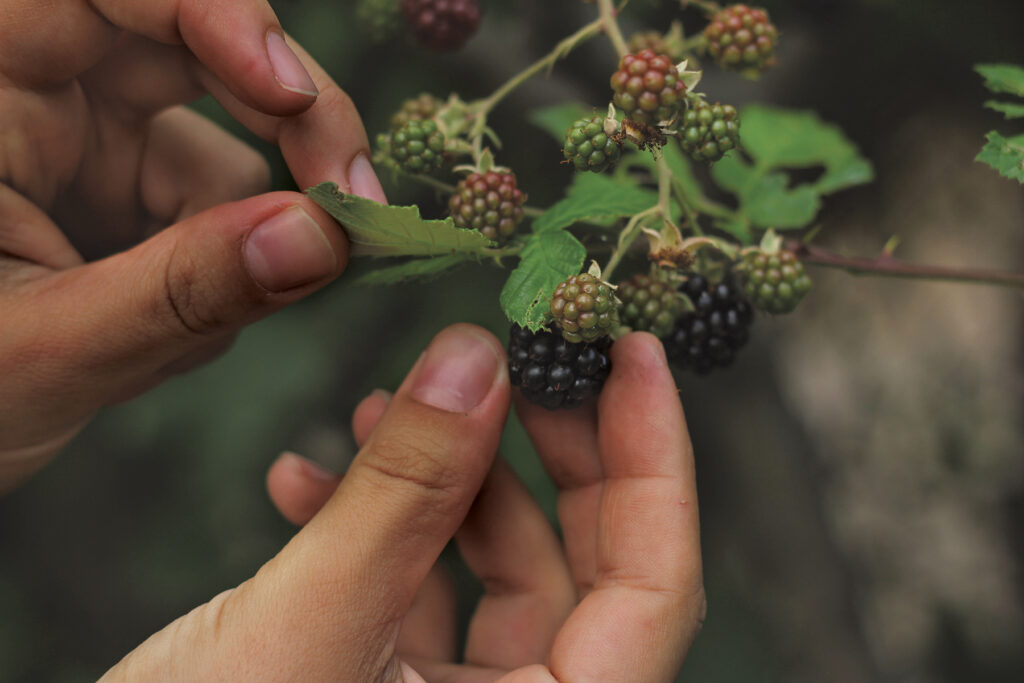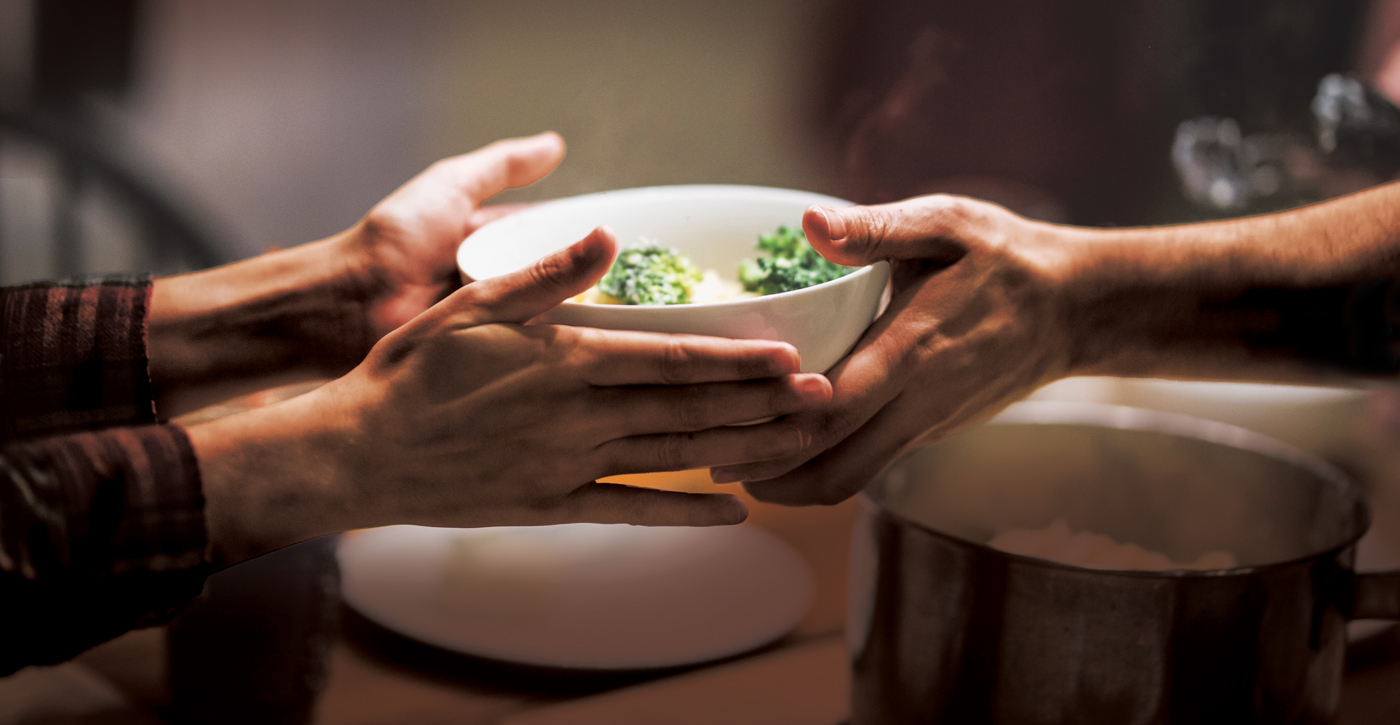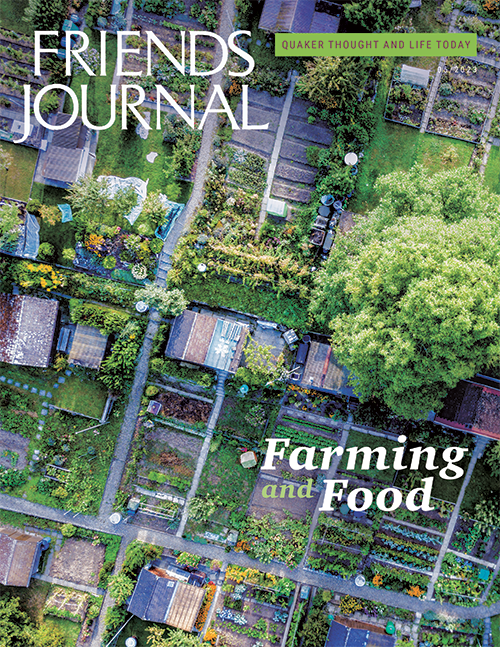Making Room for Plant-Based Eaters at Family Gatherings
Growing up in the South—mid-century and Black—meant I heard many expressions about how good a meal tasted: “They put their whole foot in that. . . . Mighty good eating!” Loosely translated, that meant the cook put everything they had in it and left nothing on the table. Another expression was, “They really can burn.” These sayings were the highest form of compliments and best served when the recipients were within earshot of the cook. Almost in unison, there would be a resounding, “Amen to that,” followed by a thankful cook appreciating that their efforts had been recognized. These heartfelt sentiments were not given up lightly, for reputations and community standings rested on such achievements. Similarly, today’s axiom “all that and a bag of chips” suggests a totality of nothing else to be desired.
After moving North as a young adult, I was amazed to hear the same phrases and see the exact recipes used by my unrelated Northern Black acquaintances. Before the age of social media, just how was it possible that a regional expression was duplicated thousands of miles away? Now I get it: it’s cultural. The Great Migration led young Southern men and women who wanted upward financial mobility to acquire white- and blue-collar jobs in the North, and they brought along Black Southern cultural traditions and generational recipes known by heart and freely shared. The food served as a bridge that connected the Northern Blacks to their Southern roots. It provided a closeness to what they left behind and a nearness to where they had landed.
I grew up on soul food and multigenerational eating habits, and I was part of a closed culture that enjoyed and revered how much food mattered to us as a people. Eating was truly a spiritual and social event. My Northern friends whose parents were from the South prepared their meals in similar ways. I knew what to expect at cookouts and formal and informal meals. And I incorporated these ways into my meal preparation in the same manner, with the same spices, and the cooking time for the meat. Nothing would be presented as rare, raw, or medium cooked: the meat needed to be fired to the bone and back again. The only acceptable red thing on the dinner table was a pitcher of red Kool-Aid.
My early childhood takeaway was that food in the Black community was about more than nutrients for the body. It is a religion, an act of socialization, and it ranks with high regard as nourishment for the spirit and soul.

Photo by Lusine0206
My early childhood takeaway was that food in the Black community was about more than nutrients for the body. It is a religion, an act of socialization, and it ranks with high regard as nourishment for the spirit and soul.
As a child, most of my meals would best be described as coming from the land to the table. My family’s acre-plus garden produced enough vegetables to be eaten year-round. My mother and other women in the community would can and freeze summer vegetables and fruit. Having a homemade, out-of-season blackberry pie in January was a special treat. It would conjure up memories of picking the blackberries in the summertime and feeling the warmth of the sun, all the while knowing it was presently the middle of winter. Homemade soup from our garden’s harvest was a delight. The fall would be what my dad and the men in the community called the “slaughter” season. The smaller children were not to be involved, and, to the best of my understanding, such methods were swift and humane to the animals that would provide meat on the table during the fall and winter months. It was always best not to name livestock that would inevitably be sacrificed for our intake, for that would indeed be painful. It was the natural order of things and how the hierarchical food chain worked.
No part of the hog would go to waste, including its innards. It took me a while to understand that chitterlings were hog intestines, hog maws the stomach, and ham hocks the ankles. Ham, tenderloins, and shoulder were all muscles. I would hear the grownups say, “Everything eaten except the oink.” I watched the women in the community come together to make the sausages and add their special mix of spices. The men would use a method to salt the meat and put it in a smokehouse hanging from hooks. I can still smell the aroma of meat hanging as it is cured.
Along with farm animals, we also had domestic animals: dogs, cats, parakeets, goldfish, and pet ducks. We were taught to take care of all animals, and treat them with respect and without harm. Our home sat on 50-plus acres that included a bubbling spring. We, along with all the animals, drank spring water. Even our clothes were washed in spring water or rainwater. The yard animals freely roamed—no fences. The hogs were in a sty. Our job as children was to keep an eye on the troughs to make sure enough fresh water and food were always available, and there was a place within the sty for them to lie down in the mud to cool themselves off. In school, I learned hogs did not have sweat glands, and cool themselves off lying in the mud for comfort. Understanding what animals needed gave me firsthand lessons about empathy for the defenseless under our care. The hog pen was deliberately put in a wooded area that invited cool breezes and protection from direct rain and the sun. Livestock was respectfully cared for and given satisfactory attention to meet their specific needs.
As far back as I can remember, my dinner plates had the following: a meat, vegetable, and a starch. There was lots of pork, beef, and poultry. Fatback and lard, a derivative of a part of a hog’s fat between the skin and muscle, would be harvested during slaughter season, and it would be the main ingredient for cooking vegetables, frying meats, and making lye soap. High or low cholesterol and cardiac health had no seat at the table, and were not welcomed discussions.
Since moving to Baltimore, Maryland, I’ve found that living in an urban environment does not lend itself to eating conveniently from “the land to the table.” My vegetables came mostly canned and sometimes fresh-cut supermarket style. Personally plucking fresh vegetables and fruits was now passé. Pesticides and hormones would be needed to mass produce food; this was understandable and acceptable. And just because I wanted a bacon cheeseburger, I began to feel I was cosigning off on the mistreatment of animals.
Evolution gives way to progression and growth. What my ancestors had to do to survive was masterful. From them, I learned to behave independently and masterfully.
About 25 years ago, I had an epiphany. I was inspired to examine the treatment received by animals raised for our consumption: mainly cattle, hogs, poultry, and lamb. In doing so, slowly I began to deviate from some of my cultural cooking habits. Was I renouncing the multigenerational dietary habits that were sufficient for my ancestors and present-day family and friends? How did I express my newfound realization that removing a cultural main staple was acceptable, without needing to explain or justify? As a Quaker, seeking the Teacher Within enlightened my path to a better eating experience, and I still remain inside the family with a sense of intimacy and friendliness.
What would my siblings think? What would I do if there was nothing for me to break bread with when we were together, with one another? It would be considered rude not to break bread in a host’s home. In the South, it would be seen as implying the host couldn’t cook well or that I had suspicions about the sanitary conditions of the cook’s kitchen. It’s not a good look to turn down food when you are a visiting guest. And yet, knowing those string beans were soaked with pork fat, the ham was tortured, and the mashed potatoes are gooey with gravy that has bits of meat bubbling atop, how does one say, “I’ll just have some macaroni and cheese, please?”
Even when I say out loud, “I am primarily a plant-based eater,” it sounds somewhat odd. Well, it is odd. On one hand, it is oppressive that Blacks have been stereotyped as having an affinity for fried chicken, and on the other hand, my friends and family see me as not abandoning our rich history and culture in its totality. I still love some Southern-style banana pudding, cornbread, and sweet potato pie. My ancestors had very little to go on and needed to stretch each morsel to the limit. I get that, understand that, and am appreciative of their creativity in developing delicacies and a cuisine out of the bare minimum. That was an act of genius. Indeed a plant-based diet is a deviation from my early childhood eating experiences, and yet my ancestors demonstrated that having access is not necessarily all about the tangible. It can also be about accessing knowledge and rethinking and creating a new thing. Evolution gives way to progression and growth. What my ancestors had to do to survive was masterful. From them, I learned to behave independently and masterfully.
Last Thanksgiving, my family prepared vegetables cooked without any meat; the stuffing was all plant-based; and in addition to the sliced turkey platter was a salmon platter. This may be the beginning of a new soul food experience!







Thank you for sharing the beauty and traditions of your family. And I am sure any food choice you share in the wamth and love with your beautiful family will be a feast. Marg
Great points of view and an attitude I have started to share these last couple of years. Having our own egg-laying hens really taught us how animals are unique with their own individual capacity and spirit. So just because I’m hungry doesn’t necessarily mean an animal needs to die.
What your ancestors had to do to survive was masterful, but so is standing alone for your own principles (w/gratitude) in a sea of abundance.
Exactly, they would be pleased to see my independence in action. They would be pleased to see what absolute freedom can do. Thank you for your comment.
Beautifully written homage to food and family… I was struck by the loving way you described food preparation, including the annual fall butchering — and yet, could understand a shift later when describing pork-fat soaked beans, etc. I hear the tension in those two and empathize. I had a similar epiphany about animals; I too grew up on a farm. I was watching the documentary, The Peaceable Kingdom at one of the Baltimore Yearly Meeting’s Women’s retreats. I now think of myself as a “visitarian” — choosing not to eat meat but when I’m visiting others, if placed in front of me, I will eat what is given.
I have contemplated eliminating meat from my diet now that I am in my sixties and this article provides an interesting perspective — specifically mentioning the treatment of the animals. Eliminating meat is a choice that can be interpreted in a variety of ways by others, and a thoughtful person considers such things. Your thoughts and description of your family’s traditions are appreciated.